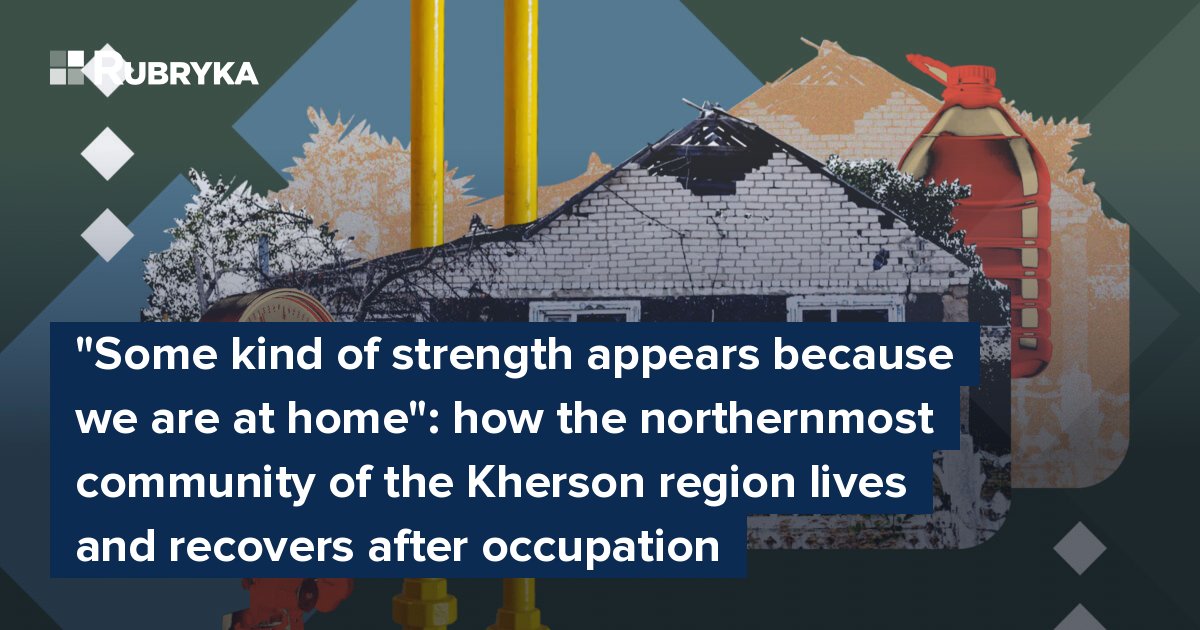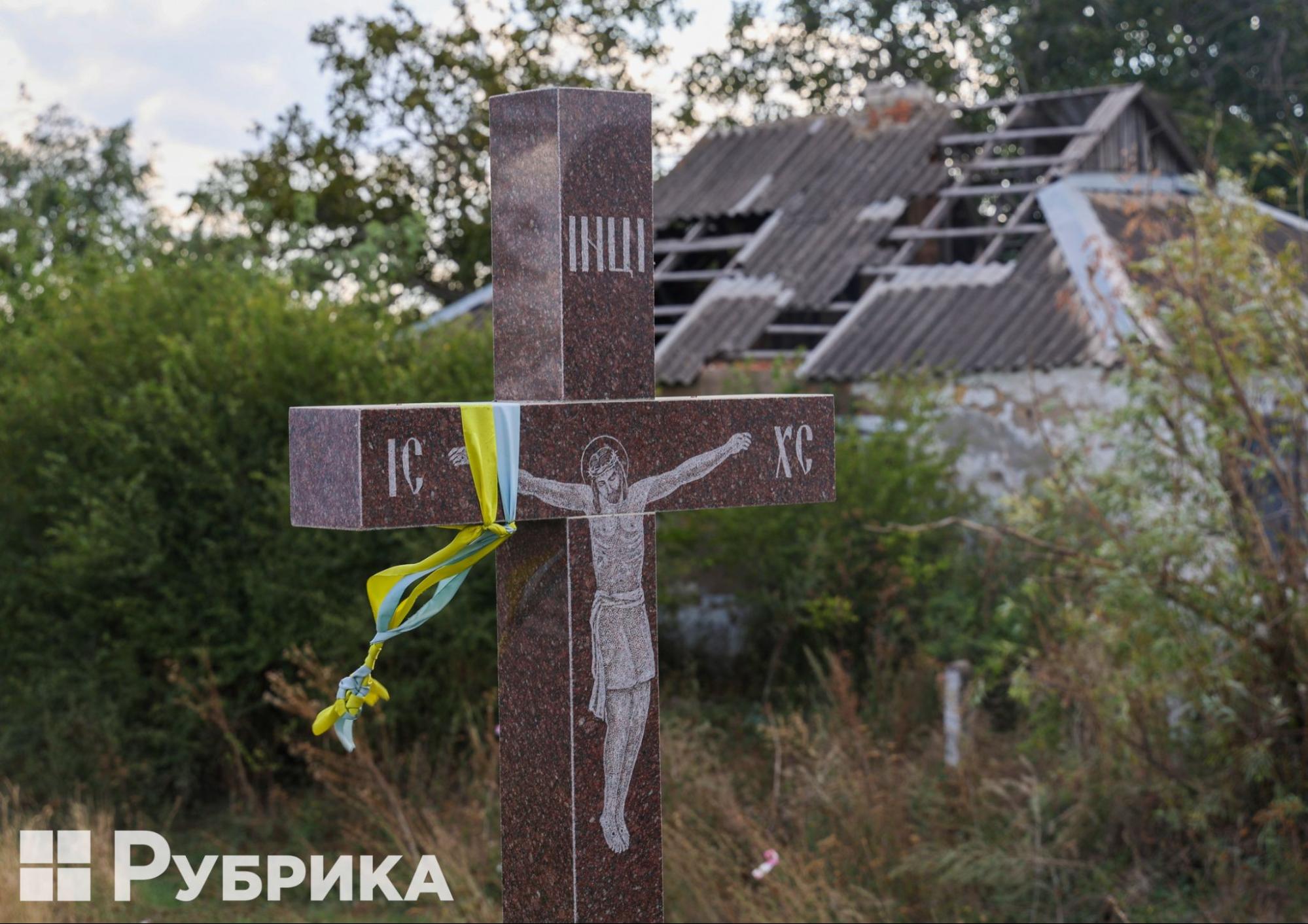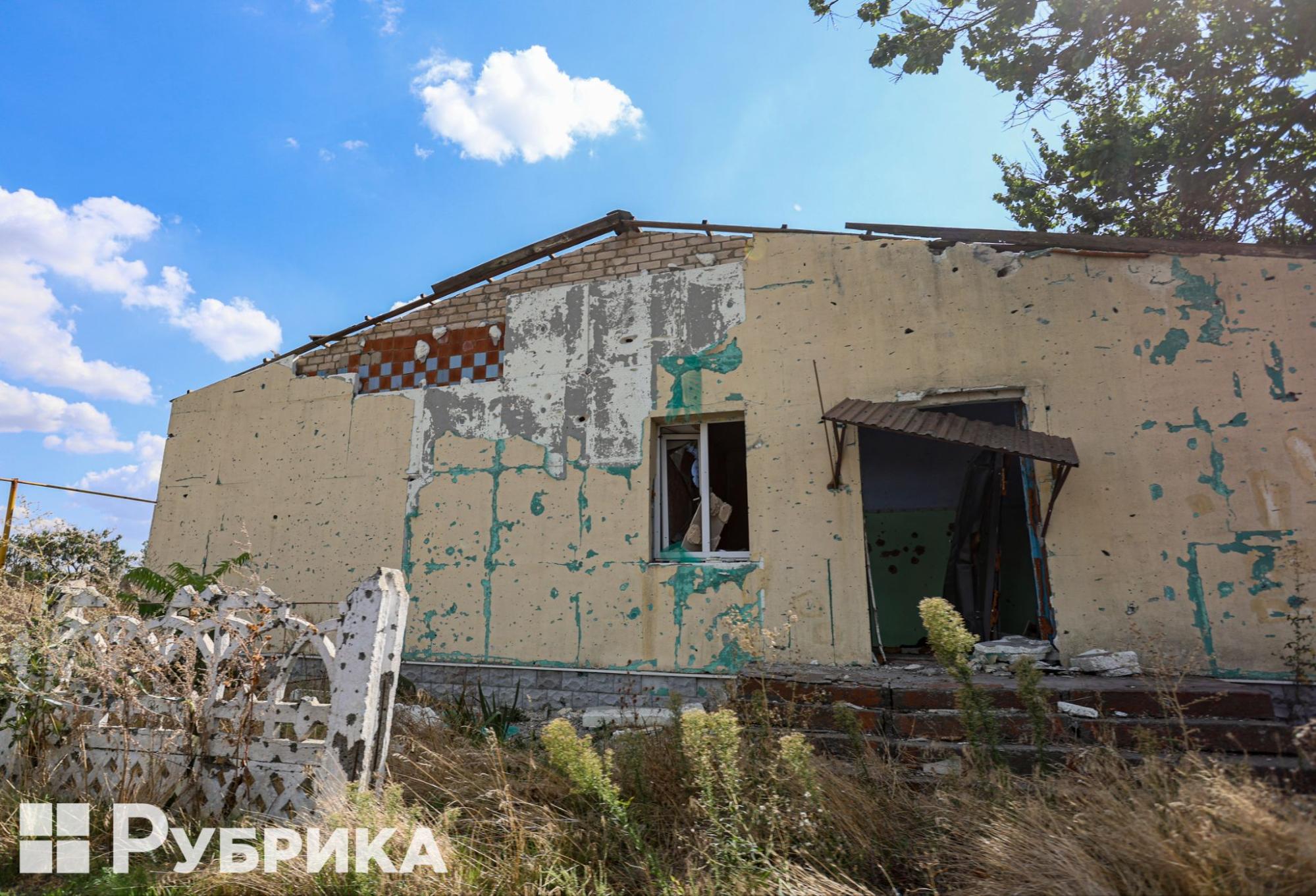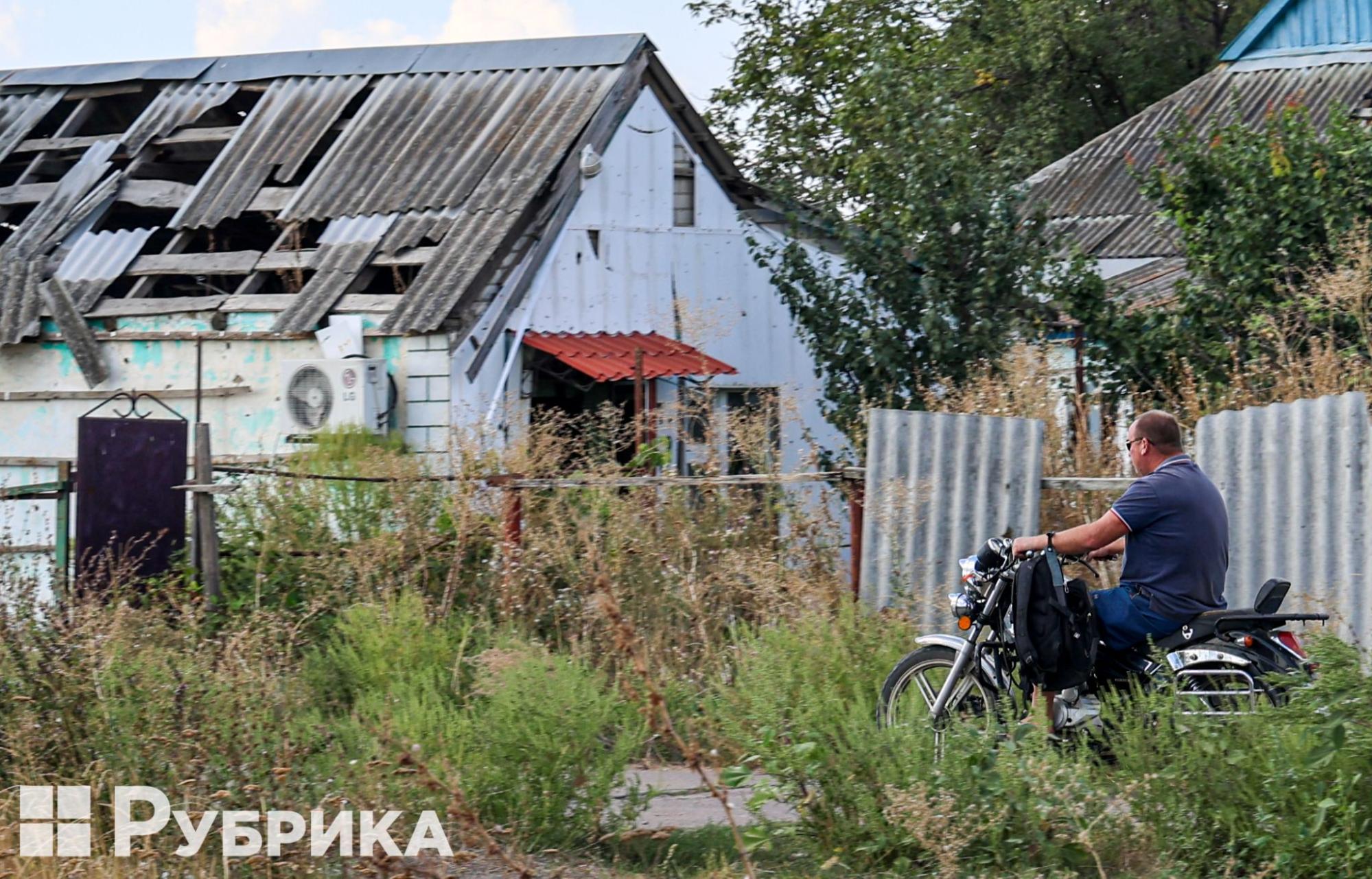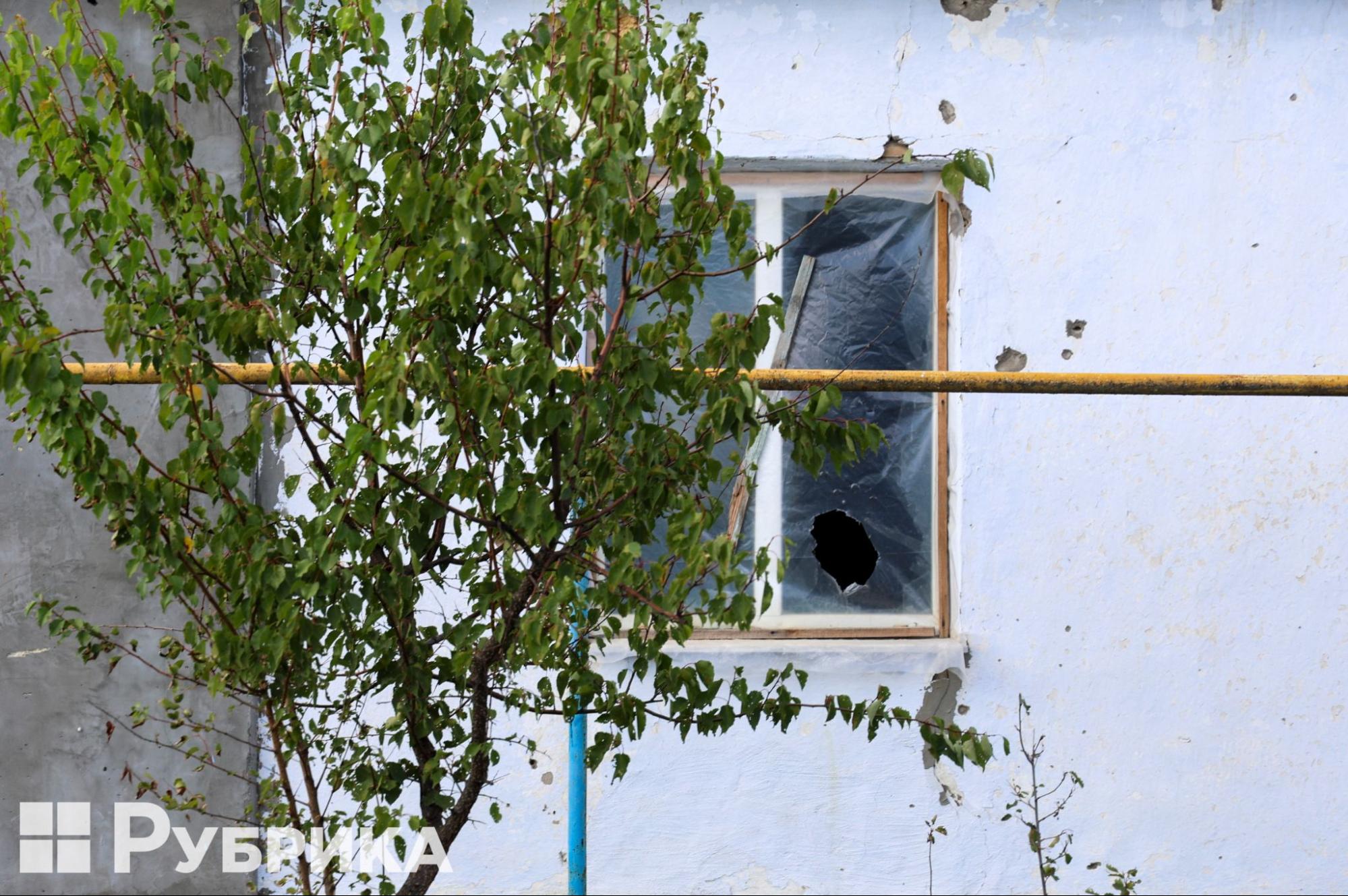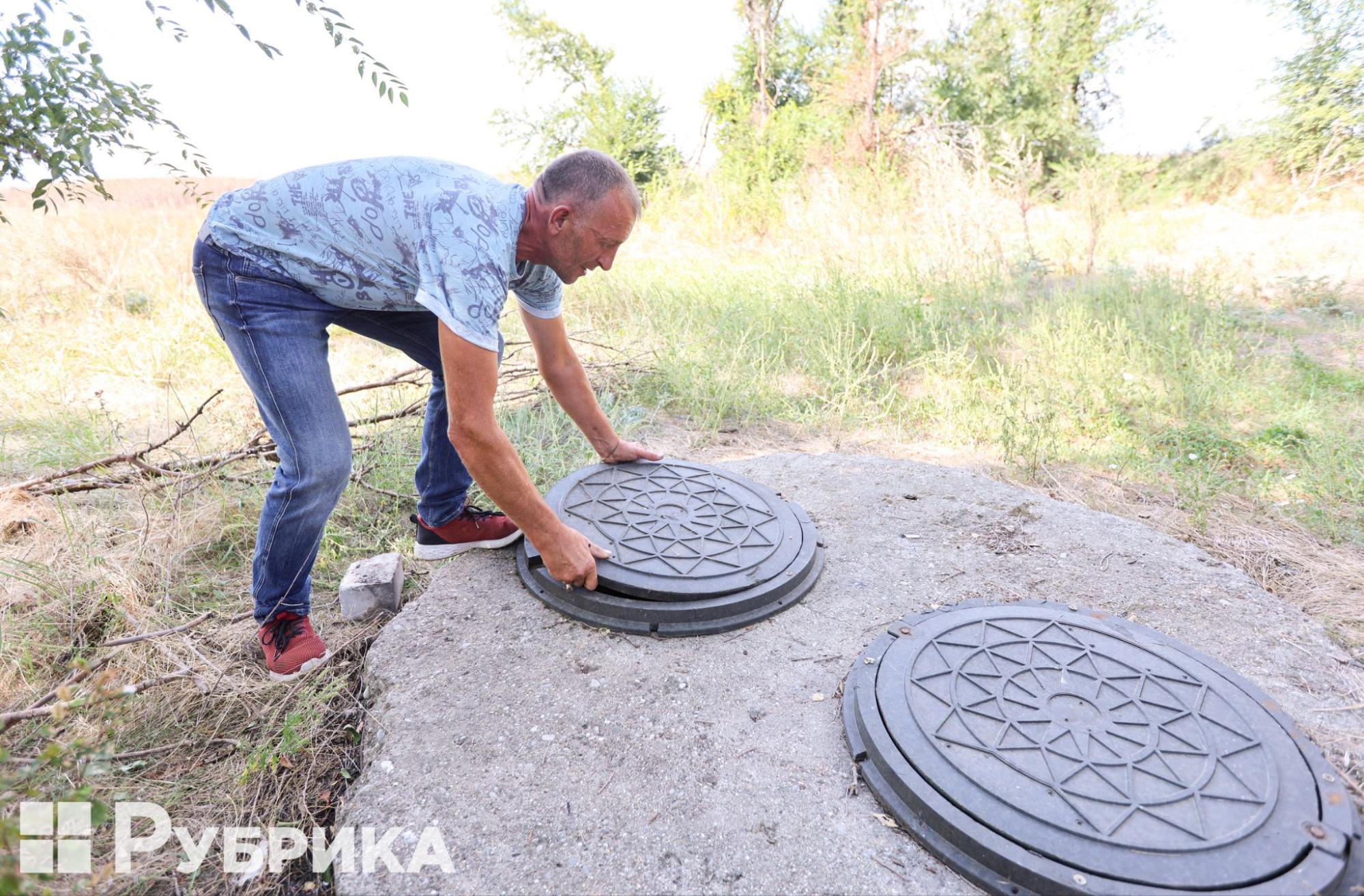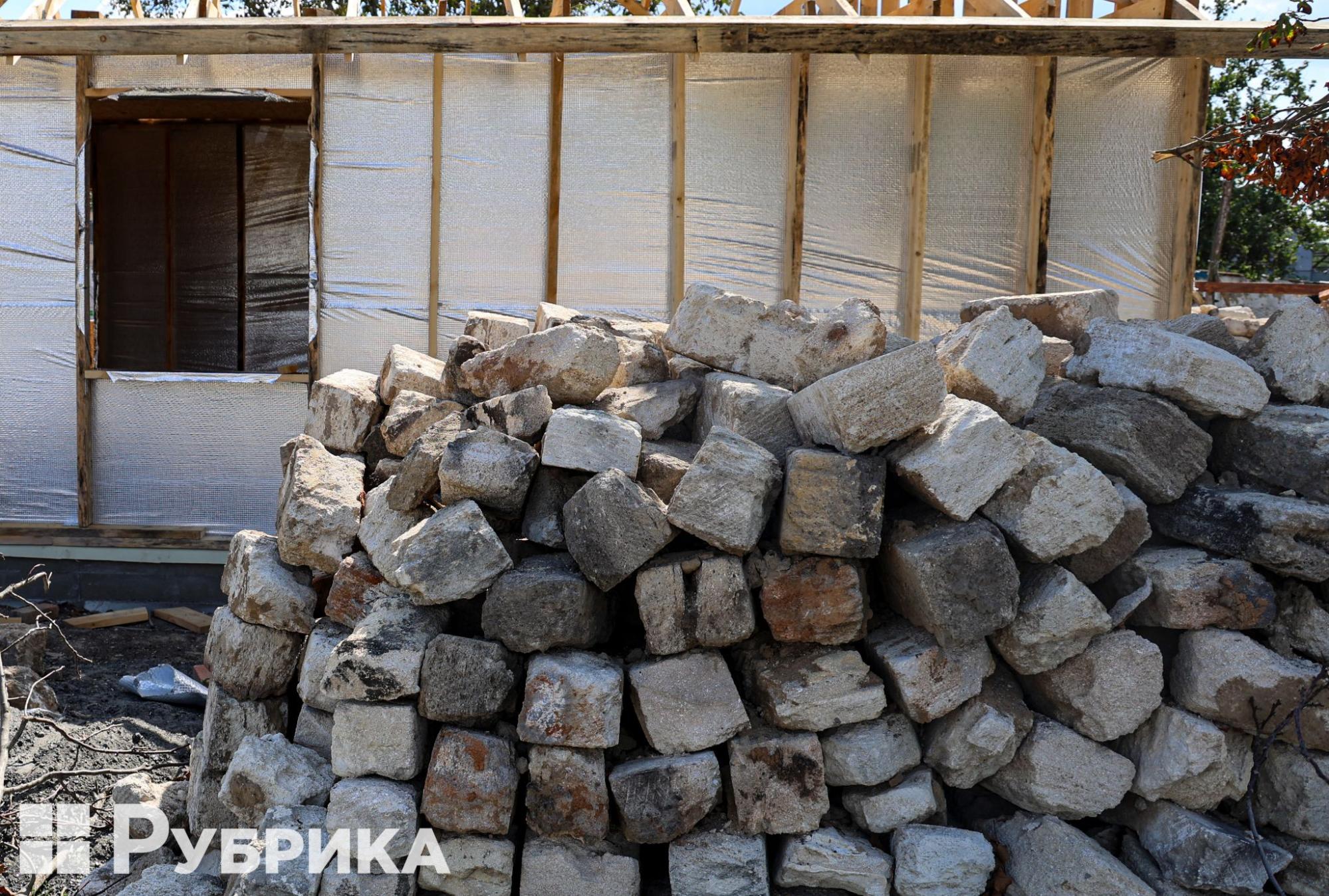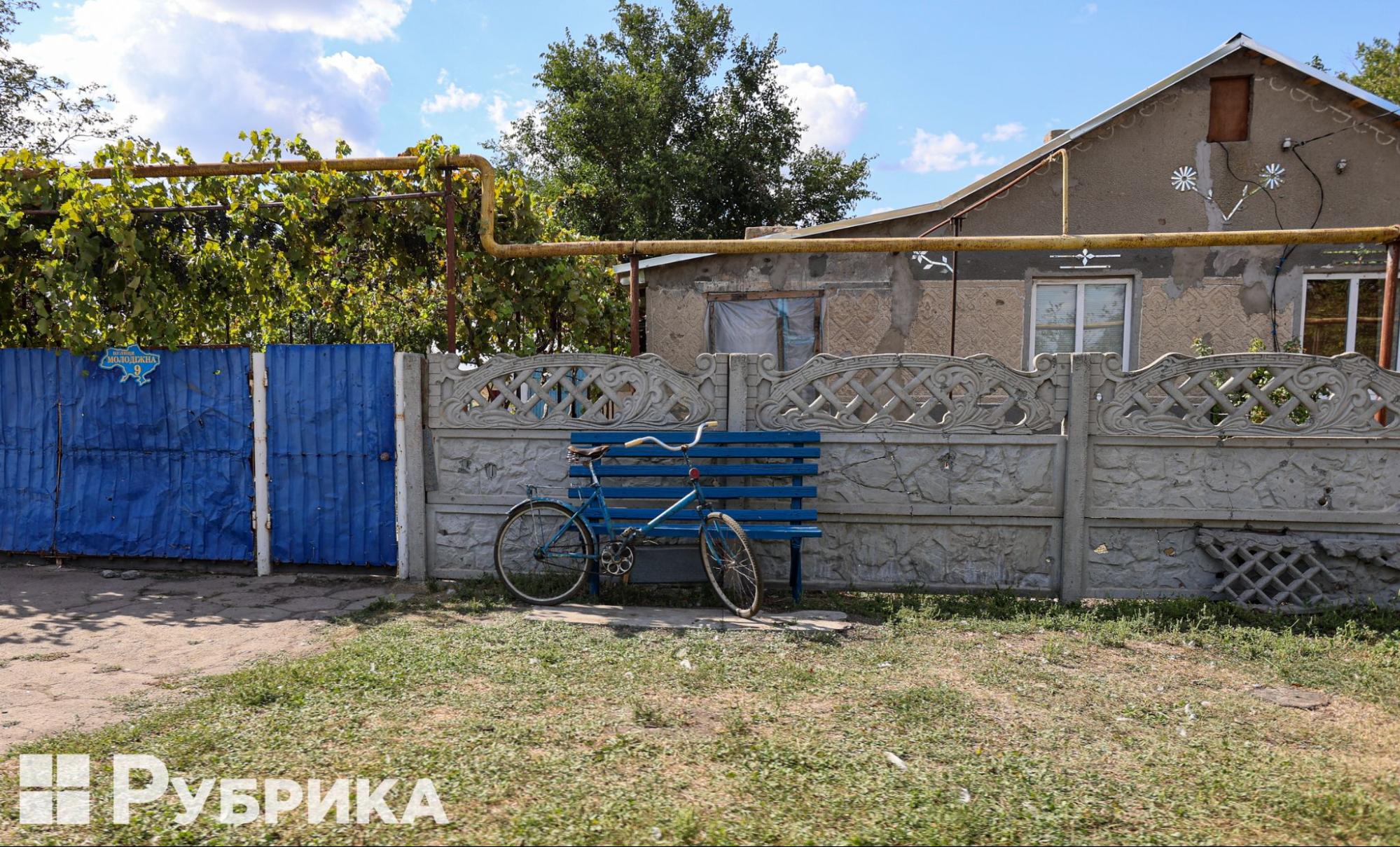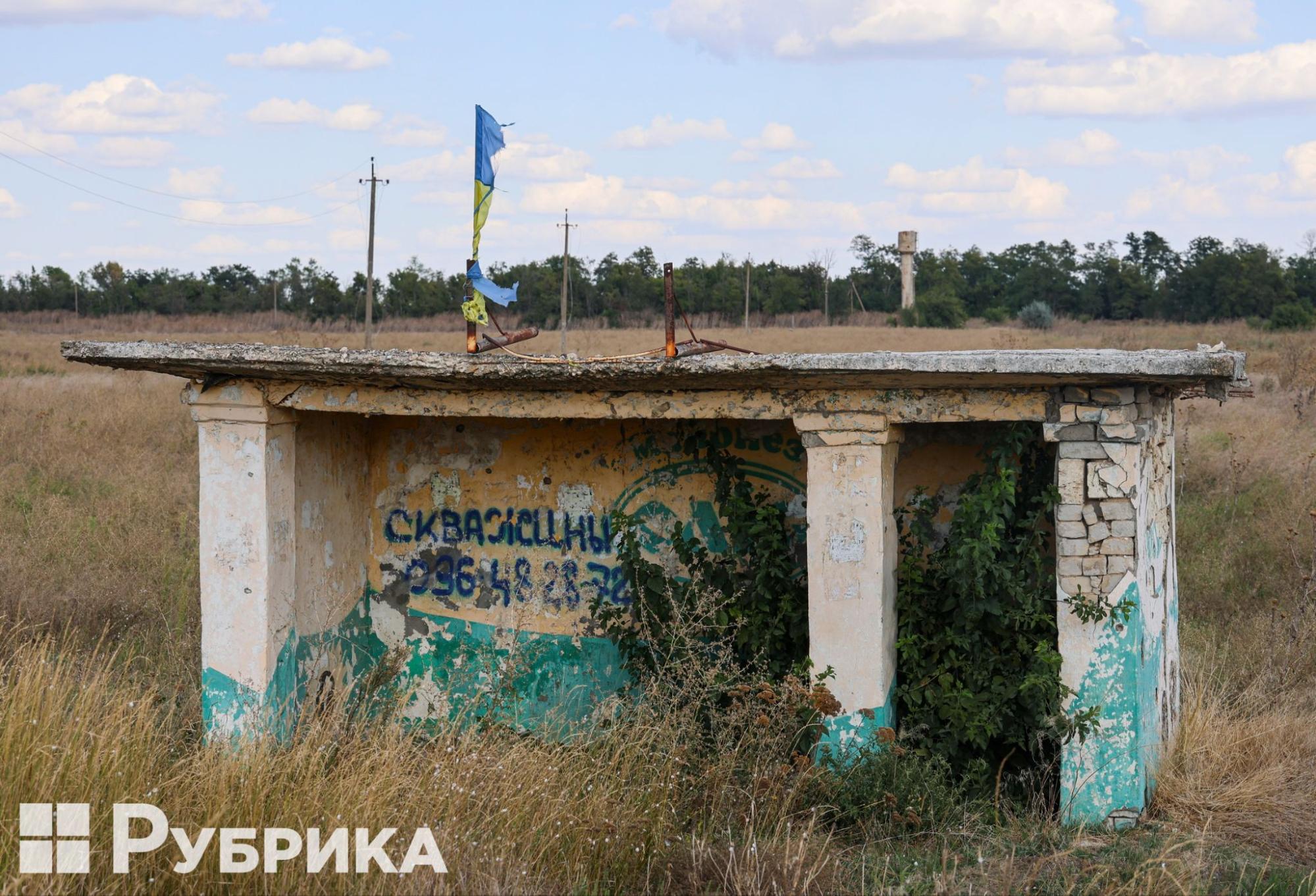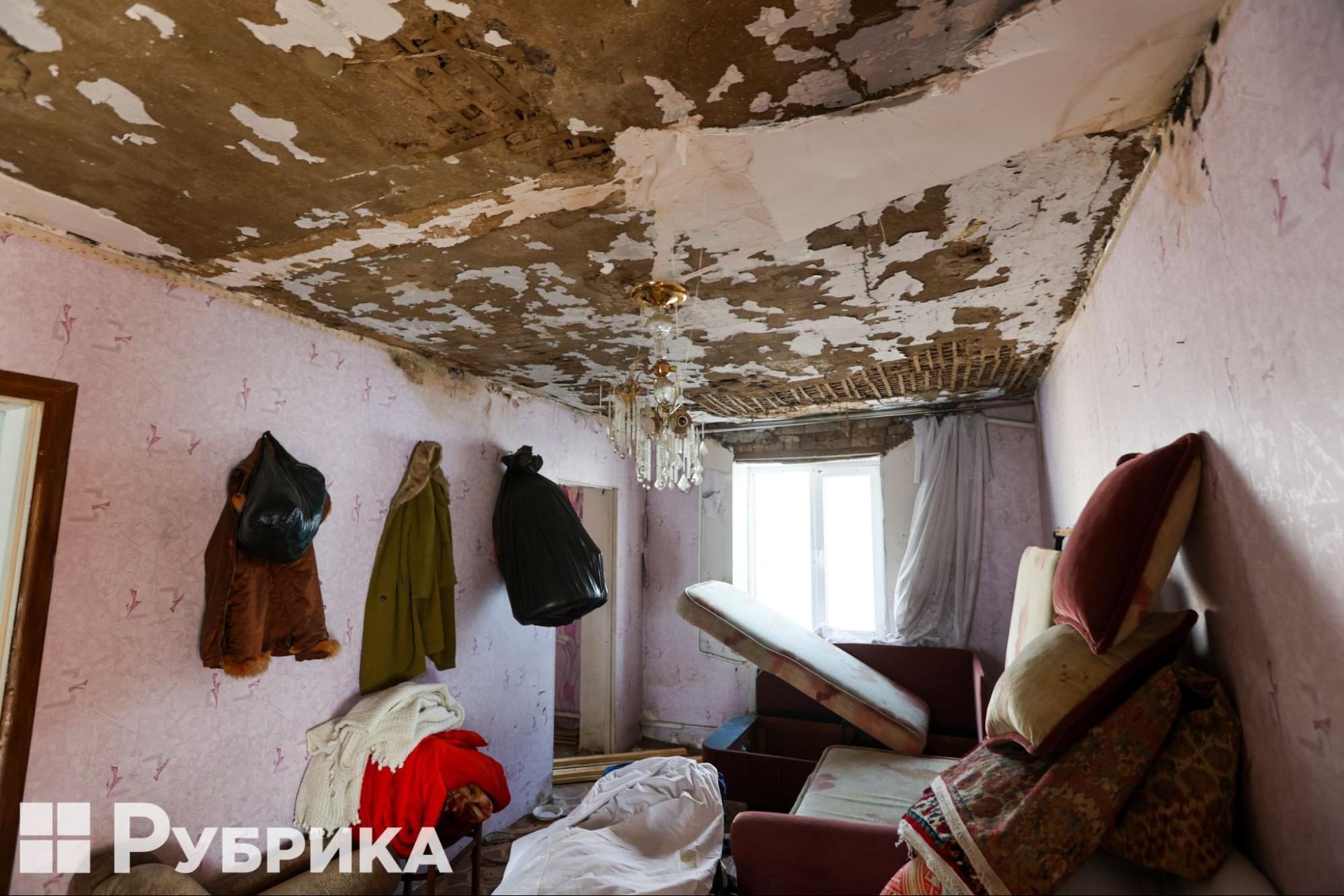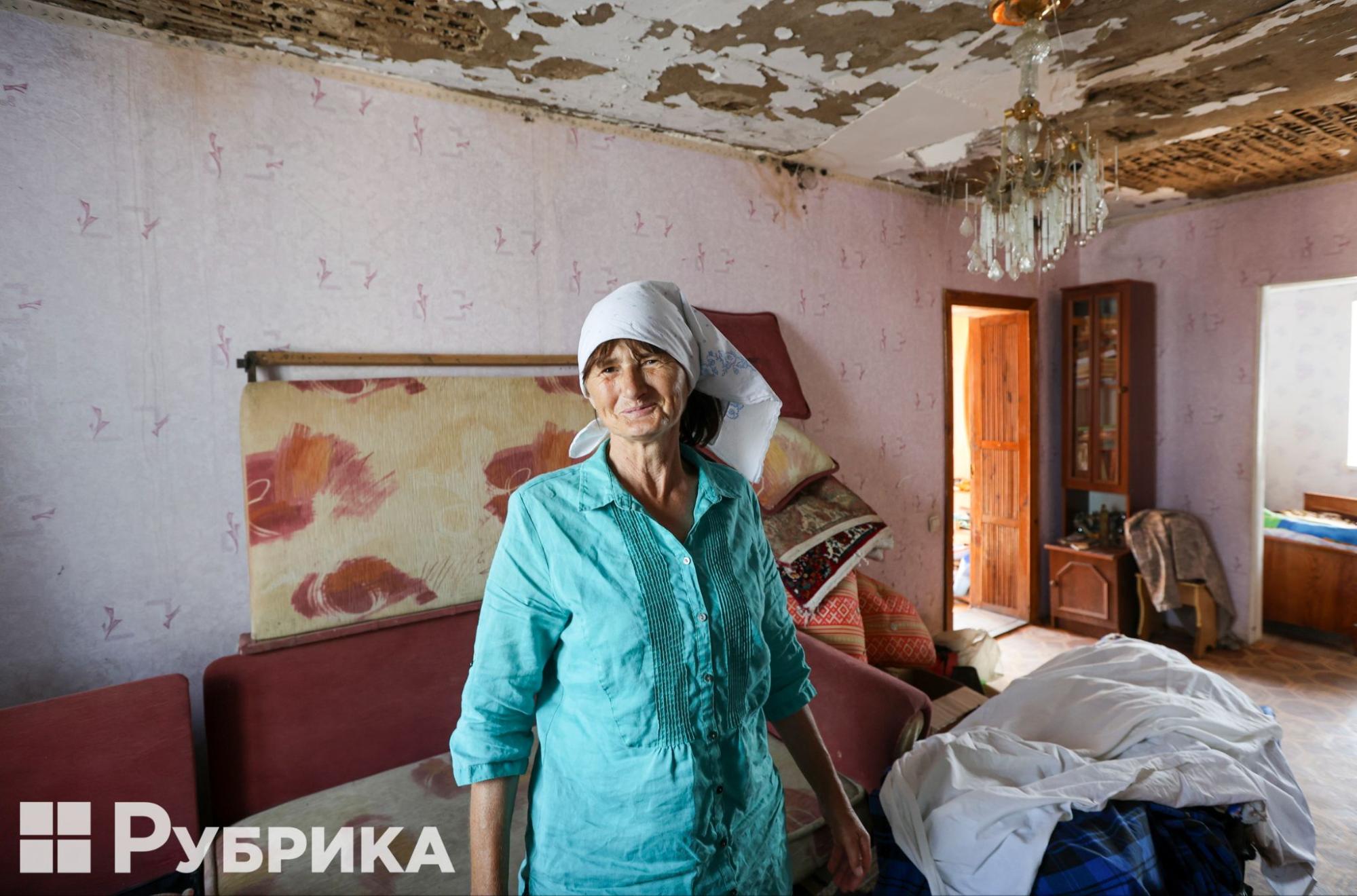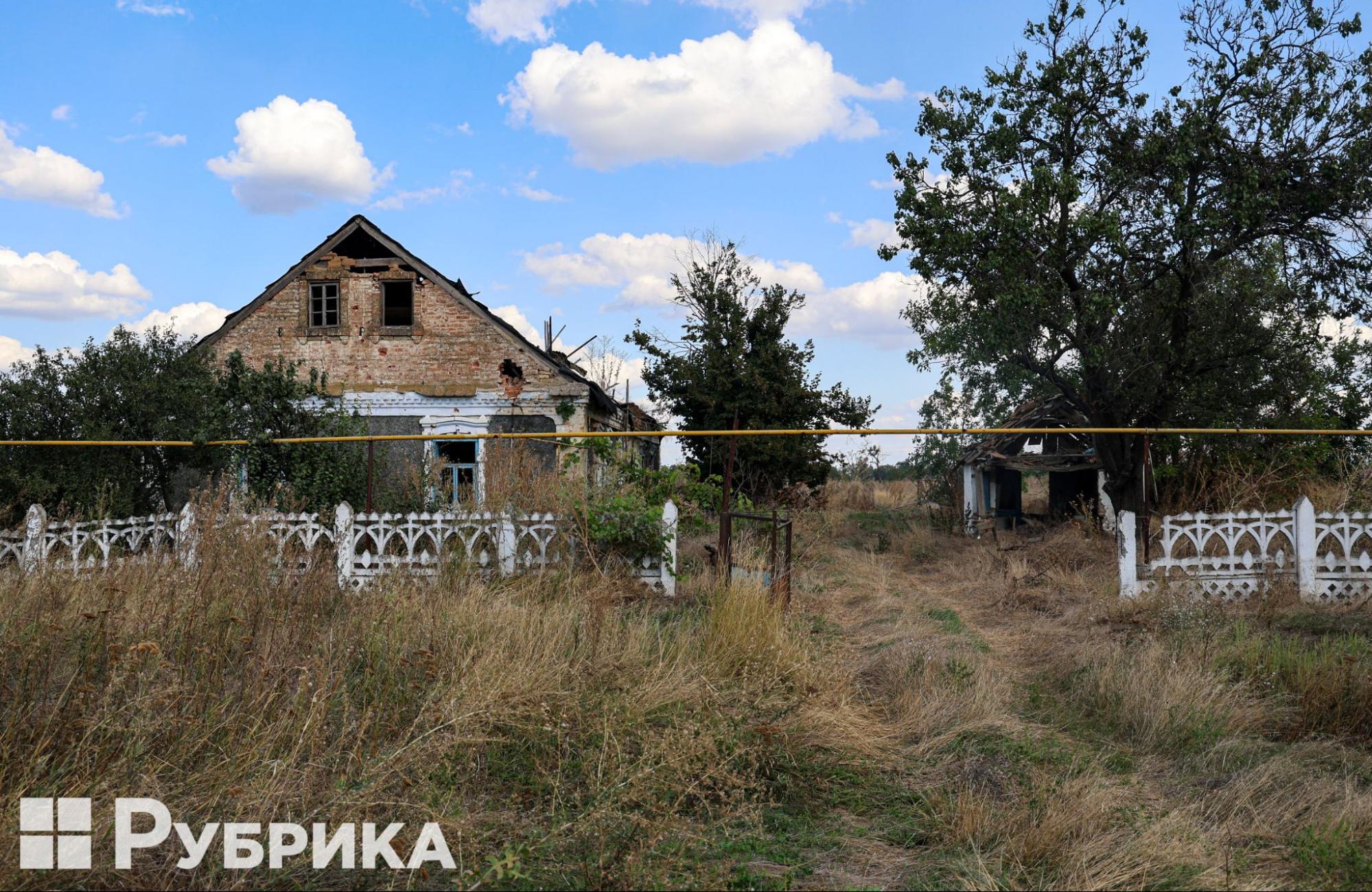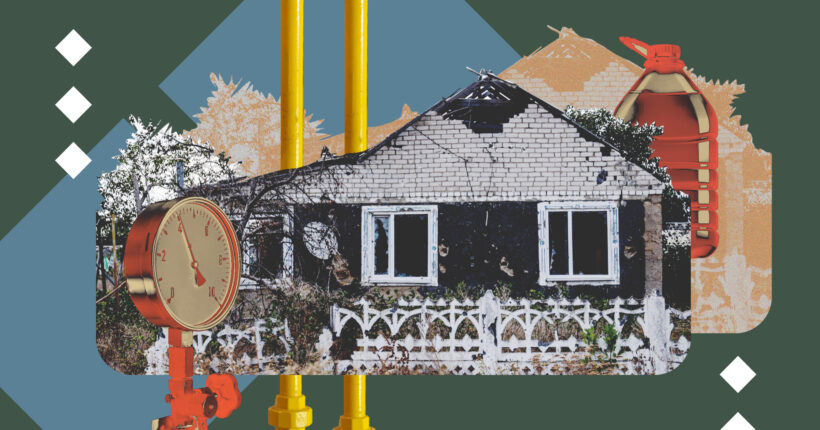
What is the problem?
The northernmost point of the Kherson region
Houses without windows and roofs, broken power lines, crushed gas pipes, and empty streets — this is how the Vysokopilska community, the northernmost community of the Kherson region, has been recovering after the Russian occupation.

Both people and animals were left without homes.
The occupation here began on March 13, 2022. They tried to organize a "green corridor" for evacuation three times, but every time Russia thwarted it. In the end, most of the locals were evacuated. Locals say that not a single person remained in some villages of the community at the time of liberation at the end of March. But now life is returning to dilapidated houses.
One of the first people we meet is Klavdia. She fussily adjusts the handkerchief on her head and shakes the dust from her robe. We distracted her from work — at the beginning of September, everyone here was actively preparing for winter.
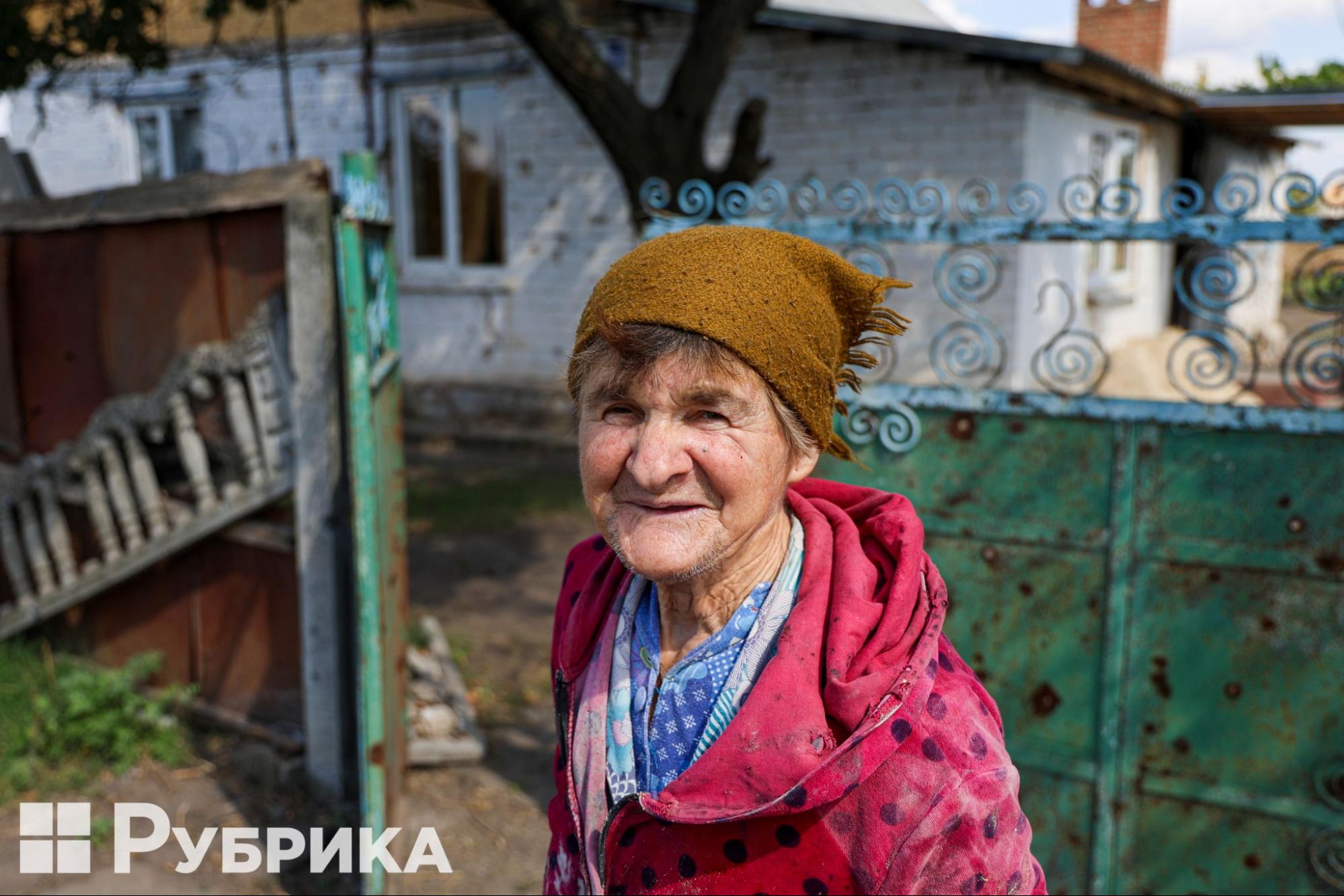
Klavdia is a resident of the village of Potyomkyne, the Kherson region.
"We were here until March 14. And then we left — they gave us a green corridor and let the old and the young leave. I left for Kryvyi Rih and returned on August 17. I didn't have a roof, the ceilings in the house collapsed, the windows were broken," shares Klavdia.
While telling, the woman sadly points her hand at her property. She says that as soon as she returned home, she began to cover the windows with film on her own. A little later, she received a pension for half a year — there was a pause in payments due to problems with documents. Almost all the money went to pay for the windows, so she could not pay for the rest of the repair work.
"I installed the double-glazed windows myself and paid 13,000. Charity funds helped repair the roof," Klavdia told Rubryka.
Now, due to the damage, Klavdia's house is cut off from the water supply. Volunteers occasionally bring her 40 liters of water. She cooks on an electric stove but hopes that the village's gas supply will be restored by winter. But, of course, no one here has any guarantees.
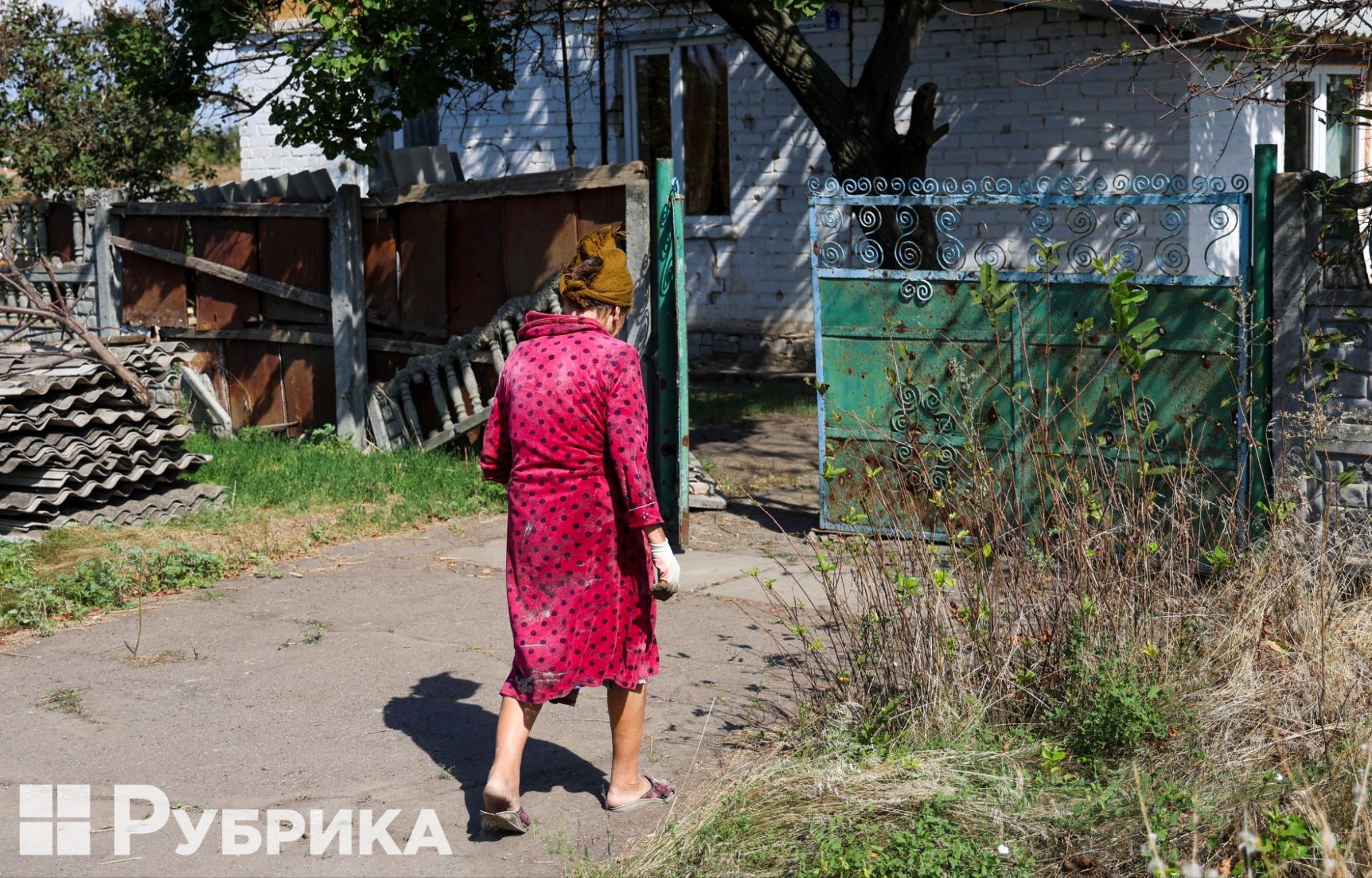
Klavdia returns to her house, where there is a lot of work.
"Many people live in Vysokopillia but want to return to Potyomkyne. They will definitely return as soon as there is a place to go," says Serhii Veselovskyi, director of the Visokopillia communal service.
While we walk to the wells with him, the director tells us that now there are a little more than eighty people here, although there were up to half a thousand before the full-scale war. Almost every house has no windows, and many are completely destroyed.
Thanks to international funds, religious communities from other regions, and state aid, people are gradually being helped to restore roofs on their houses. However, new roofs have been installed for only six or eight families. The rest have nowhere to go yet.
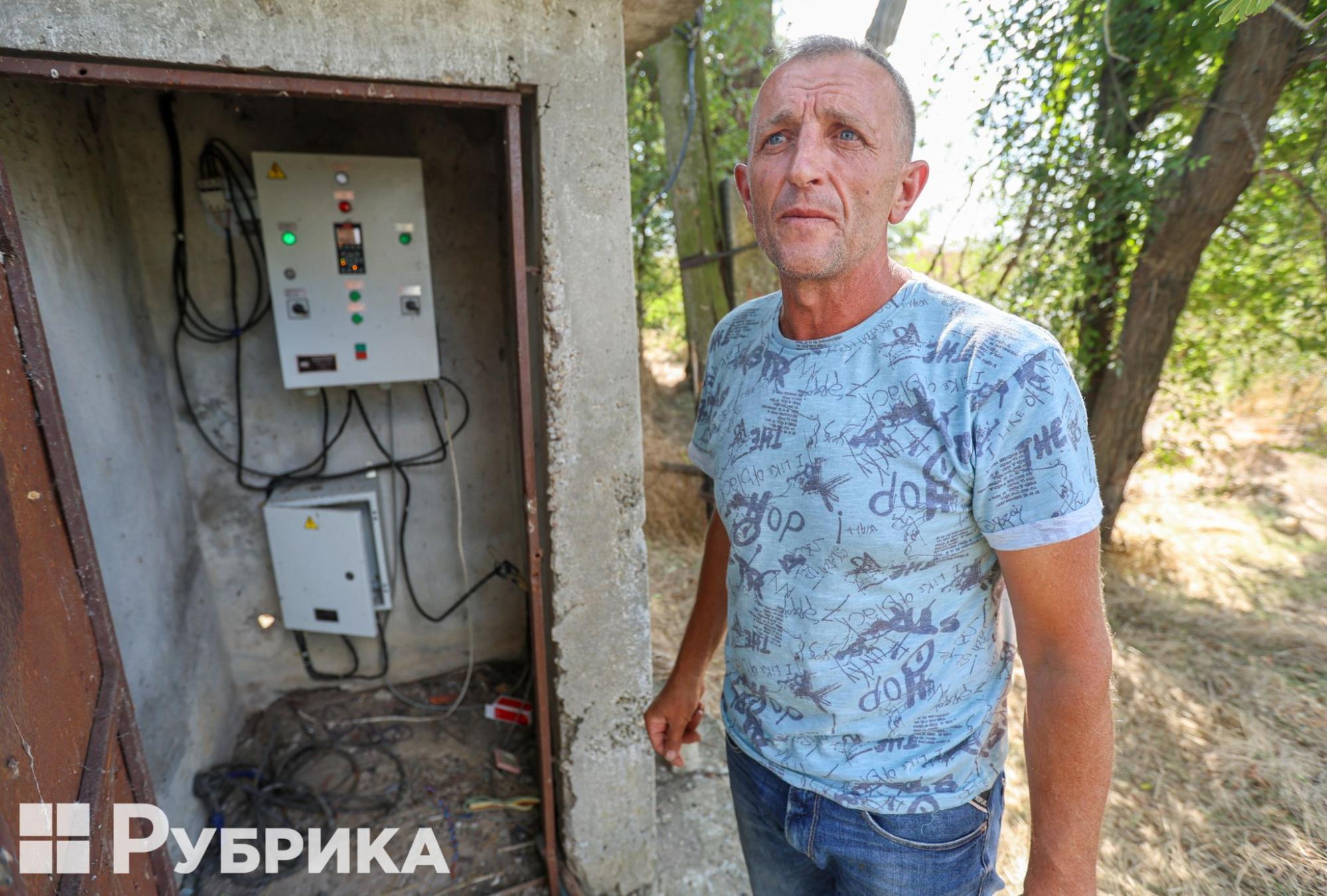
Serhii Veselovskyi, director of the Visokopillia communal service.
What is the solution?
Water three times a week
The Vysokopilska community tried to restore the water supply for a long time, but it was impossible to do so everywhere. Potyomkyne cannot switch to an uninterrupted water supply due to complex breakdowns. So, on July 13, the community turned to the Isolation fund with a request to help with submersible pumps.
Not even a few days have passed since Vysokopillia received a positive response to its appeal from the ZMINA 2.0 project team. Despite operating in a completely different area, an EU-funded arts and culture initiative also supported the affected population as the full-scale invasion began. Nataliia Tyshchuk, project manager of the Isolation charity fund, shares: "With the beginning of the war, the concept of our work changed. We are grateful to the EU for supporting emergency assistance to communities and covering difficult needs. Those funds, which were directed to culture, managed to be partially directed to help communities. However, this was not charitable assistance — the communities had to work hard."
She explains the community applied for project participation, looking for contractors and commercial proposals. Later, the community was engaged in logistics and delivered pumps from Kyiv to the community.
"At that time, it was quite difficult to find at least some pumps — they were in short supply in Ukraine. However, it was clear that the community was not indifferent to its people. Everything was done faster than anyone could have expected," says Tyshchuk.
Finally, together with Veselovskyi, we approach the well. As part of the aid package, Isolation, and the EU handed over two pumps that were installed on wells. The village received four more pumps under another aid program. The community is preparing for most residents to return when it is safe. Therefore, the number of pumps is such that their capacities should be sufficient even when all those who evacuated return to the village. However, since the repair of the water supply network is ongoing, water is not supplied constantly.
"We put a new pump and a new pipe here. We turn on the water three times a week — on Tuesdays, Thursdays, and Saturdays, there is water until five to six 6 p.m. People know the schedule and stock up," the official explains.
Near the well that Veselovskyi talks about, there is a large water tower pierced by yet another Russian projectile. However, it stopped working a few years before the full-scale war — it was replaced by the already-mentioned wells so that the supply of clean water was constant. Almost every local mentions in conversation that their water is the best, but access to it is now very limited.
"There was automation here before the war, and everything worked, everything was fine. And here is the best water in our entire Vysokopillia district. This well provided water to people around the clock," says Veselovskyi.
The director adds that there are enough pump capacities today. However, he notes that the community should stock up in case of breakdowns.
"We have water, and the pumps are working. Vysokpillia already has water 24 hours a day. Here, in Potyomkyne, a lot of repairs still need to be done. In a year, 70% of work has been done. If people used water 24 hours a day, I would consider it 100%, but many still receive it only according to the schedule. We don't have spare pumps, which could become a problem later," the director shares with Rubryka.
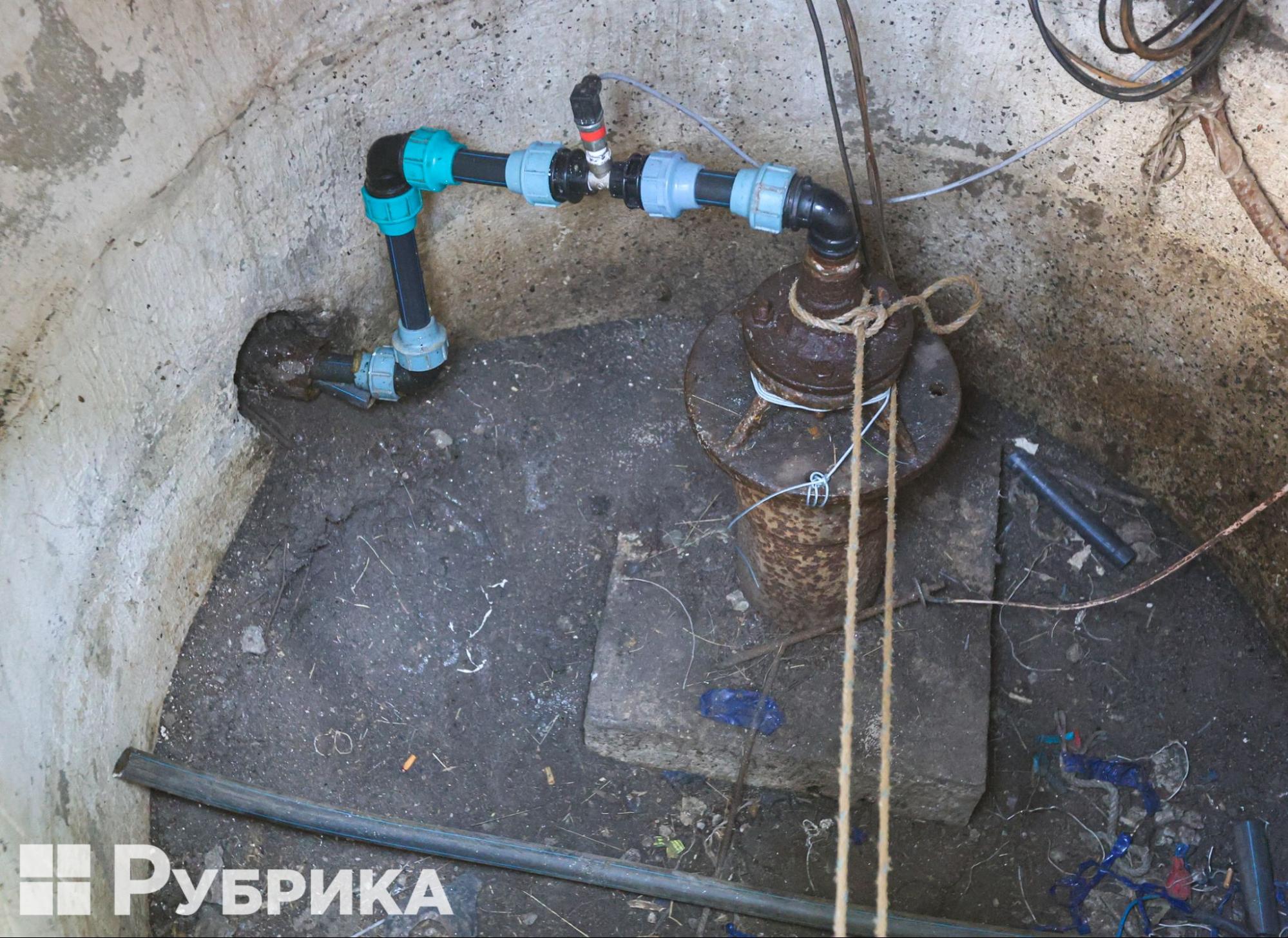
A pump supplies the village with water.
Later, having already said goodbye to Veselovskyi, we meet a local who also returned from evacuation with his wife and newborn daughter. He says that his house is at the very edge of the village, and water also reaches there, but it is chaotic, not according to the promised schedule. The man speaks for a long time about the mined fields, the farm he lost, and other community-rebuilding problems.
"I asked community leadership to give me tools for a couple of days so that I could fix up the house a little bit. They said they couldn't. It feels like they can't do anything," says Serhii.
The problems, however, did not go unnoticed — a week after our visit to the community, the president of Ukraine signed a decree on the dismissal of the head of the Vysokopillia administration, Hanna Shostak-Kuchmyak. The reason is the failure of community reconstruction.
How does it work?
"Some kind of strength appears, because we are at home"
The spouses, Vira and Volodymyr, are also being helped to restore the house. A 64-year-old woman invites us into the yard but asks us to take pictures so that the piles of garbage that have just been taken out of the house are not visible — before the occupation, these were furniture and household items that have rotted while the house was without a roof and owners.
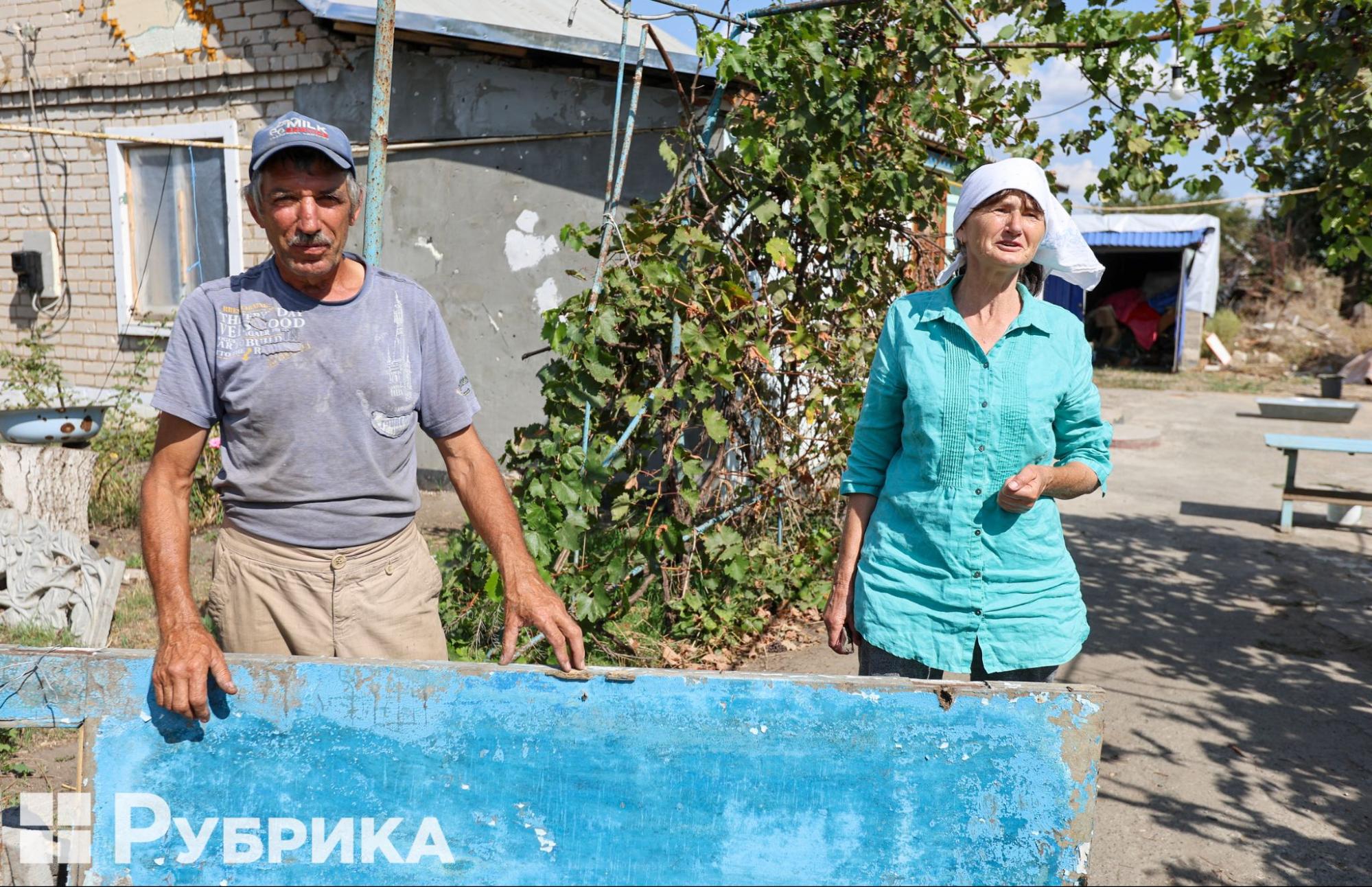
Volodymyr and Vira stand in their yard.
"Look, we already have water. We are so grateful!" Vira starts pumping water from a well surrounded by numerous bowls. "We have the best water! They even wanted to sell it as mineral water. Even neighboring villages take water from us! They used to. Before the war," Vera sighs.
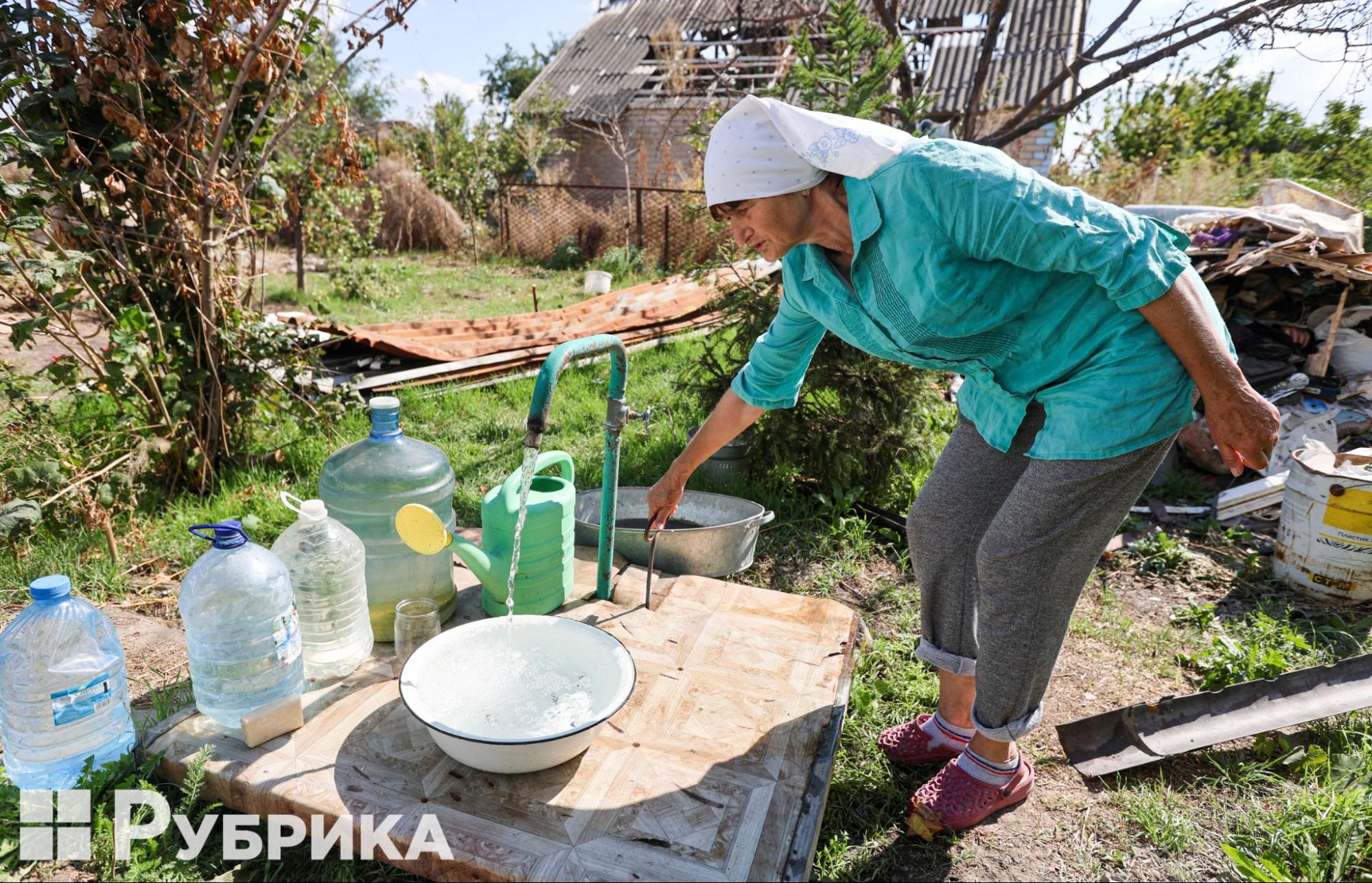
Vira is getting water.
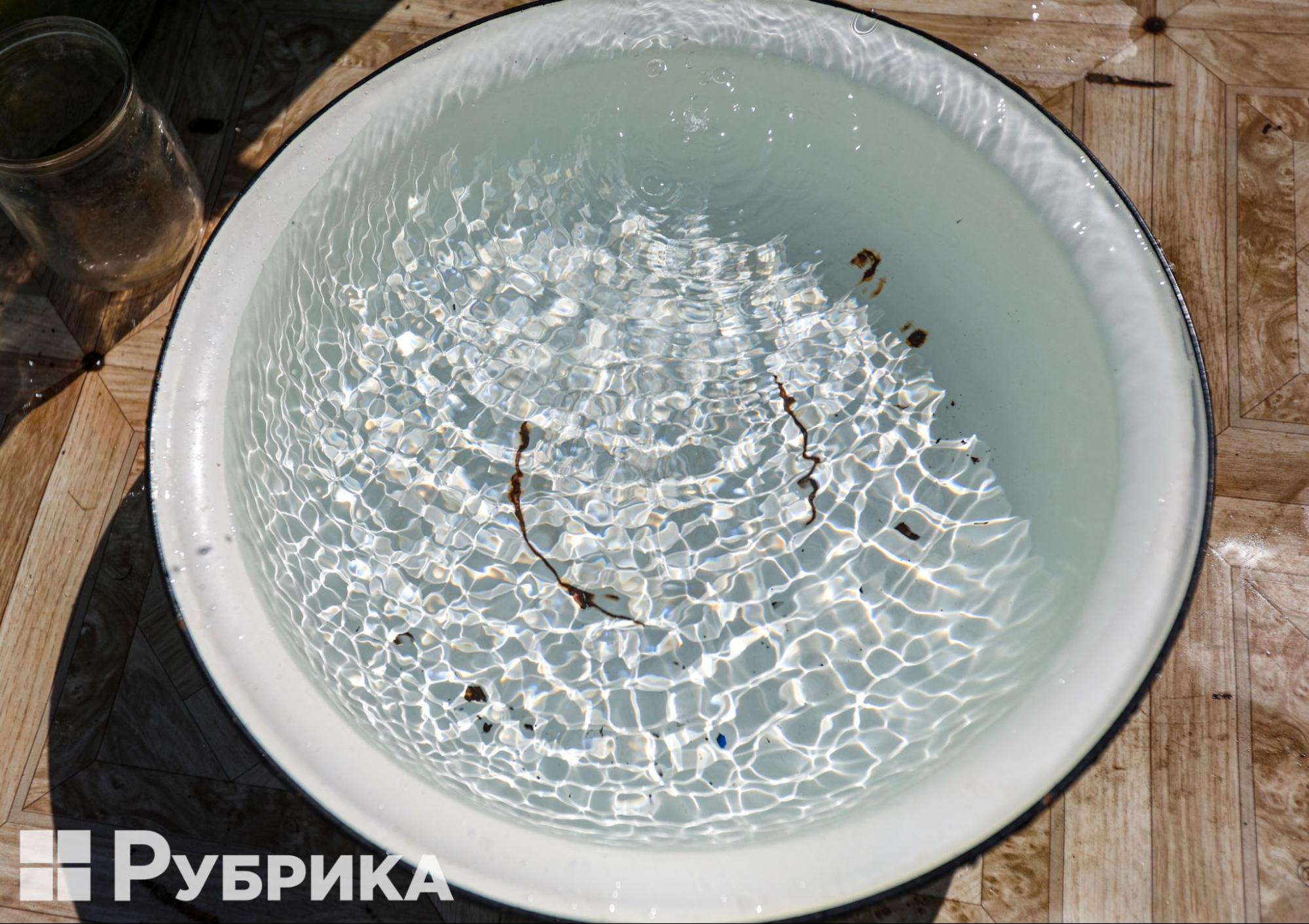
The best water in the community.
After a while, Vira smiles and says that she is sure that after the reconstruction, the house will be better than before the war. Several benefactors joined together to rebuild it and several other houses in the village.
"You see, everyone is helping now. Our roof has already been restored. The windows were delivered today. The Uman church helped us with them. We still need a lot of help. Here, you can see what is going on with the ceilings. There was no attic, nothing. And now there is," says Vira.
She and her husband lived in Kostopil, in the Rivne region, for a whole year. After the liberation of the community, the spouses periodically came to conserve the damaged house until spring.
"Well, we've been back a little more than a month. We came from time to time and covered the house with something so that it would not disperse. They gave us a tarp, so the house was preserved. The ceiling collapsed, but it's okay — we will have windows installed on Tuesday. We have already been given boards for the ceiling. My husband makes the ceiling while we have the strength. When we were in Kostopil, we really wanted to go home. When we arrived here, there was so much joy," Vira shares.
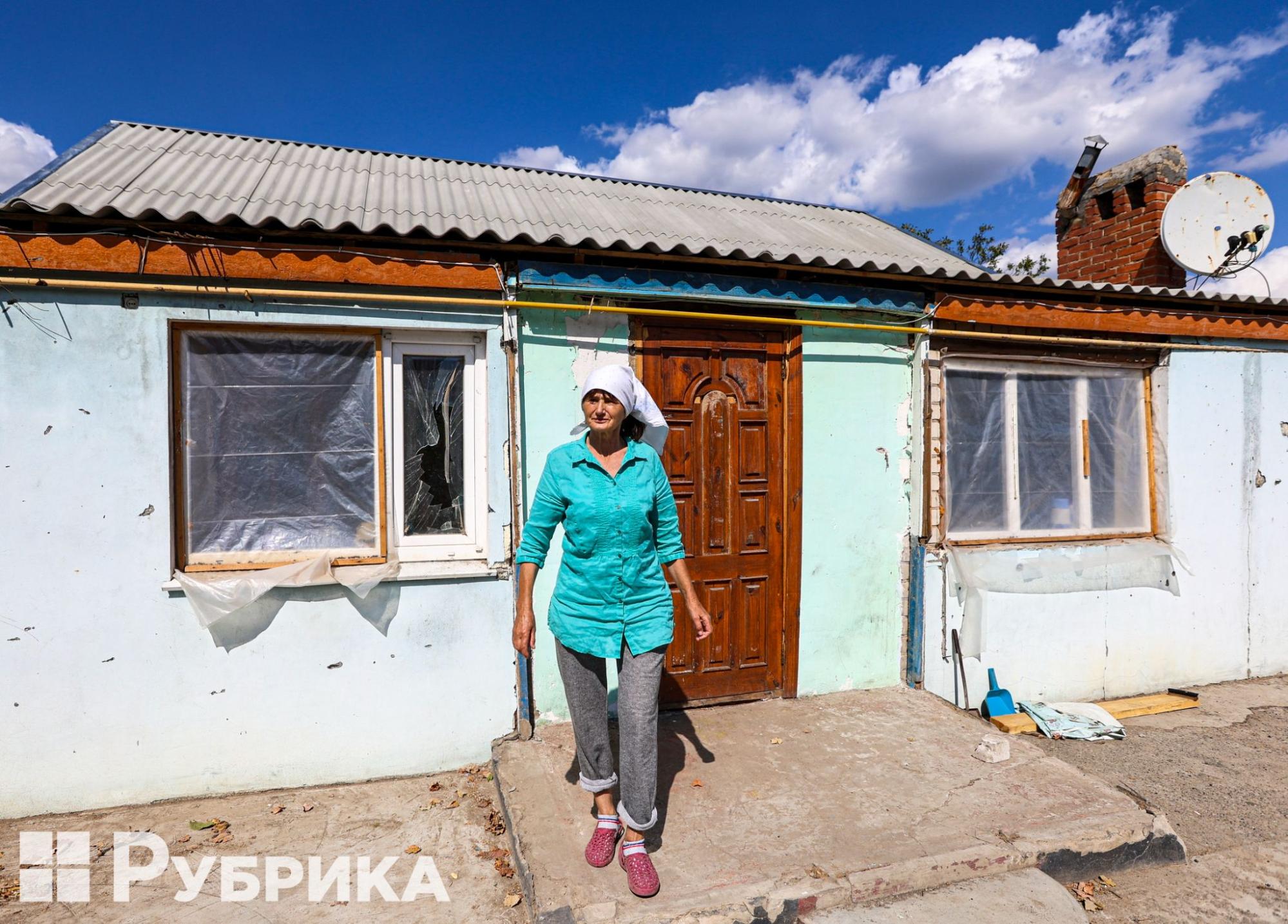
Vera stands near her house.
Vira's 93-year-old mother also lives with the couple. She is staying in Zelenodolsk for now.
"There is no way to bring her here yet. I am there with her often. I cycle 12 kilometers there and then 12 back. But some strength appears because we are at home," Vira smiles.
In total, the Russians destroyed 80% of the Visokopillia community. Fifty-seven of its residents died from injuries received under shelling. Another 12 are considered missing. After the community's liberation, people evacuated almost entire villages, but now they are returning home. Neatly stacked boards, bricks, and other building materials stand near some of the destroyed houses. Reconstruction here will be difficult, but it is not so easy to break the locals.
The publication was prepared with the support of the European Union. Its content is the sole responsibility of the authors and does not necessarily reflect the position of the European Union. The Visokopillia community received emergency assistance within the framework of the ZMINA 2.0 project, which was implemented by the International Charitable Foundation ISOLATION. Platform for Cultural Initiatives with the financial support of the EU.



